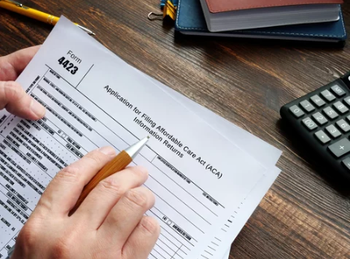
Historical Redlining Associated With Increased Heart Failure Risk in Black Adults
A new analysis from the American Heart Association found present-day heart failure risk was higher among Black adults who lived in areas historically impacted by redlining.
A
Historical redlining practices are associated with an increased risk of
This higher risk of heart failure among these Black patients was mainly driven by the increased burden of adverse
In the 1930s, the Home Owners’ Loan Corporation started to sponsor low-interest mortgage loans to help people recover from the financial crisis of the Great Depression. The practice of “redlining” was a color-coding system for neighborhoods across the United States, based on “investment risk” criteria: Red areas, largely Black communities, were deemed too risky to insure mortgages. The passage of the Fair Housing Act of 1968 outlawed these practices, but reduced investment in social and economic infrastructure led these inequities to continue for multiple generations.
“Although discriminatory housing policies were effectively outlawed nearly a half-century ago, the relationship between historic redlining practices and people’s health today gives us unique insight into how historical policies may still be exerting their effects on the health of many communities,” said Shreya Rao, MD, MPH, co–senior author and a cardiologist and assistant professor in the Department of Internal Medicine at the University of Texas Health Science Center at San Antonio and University Hospital, in a statement.2
Prior literature shows a higher rate of stroke and an increased risk of
The study population was 55.4% female; had a mean age of 71 years; 801,452 participants self-identified as Black; and approximately 1.6 million participants self-identified as non-Hispanic White. Other races were excluded from the study due to the low amount available within the Medicare data. Exclusions from the analysis were made if participants had a history of heart failure or heart attack in the prior 2 years, had less than 2 years of Medicare coverage before the study start date, or were younger than 40 years.
Maps of historical redlining were overlaid onto modern-day maps of 1044 zip codes in the United States and then sorted by investigators into 4 groups ranging from zip codes with the least amount of area affected by redlining to those with the greatest area exposed to the practice. Investigators sought to assess the difference in the risk of heart failure between individuals from communities with the highest level of exposure to redlining and those from other communities.
To do so, the team assessed the association between living in higher proportions of redlined zip codes and the risk of heart failure, performing separate analyses for Black and White adults. Variables, including SDOH, were determined at the zip code level with Social Deprivation Index scores collected in the American Community Survey from 2011 to 2015. Scores were a composite measured based on 7 demographic characteristics: poverty rate, education level, employment, access to transportation, household characteristics, renters vs owners, and percentage of overcrowded households.
Upon analysis, investigators found Black adults living in zip codes with higher redlining proportions had an 8% higher risk of developing heart failure after adjusting for age, sex, and comorbidities (risk ratio [RR], 1.08; 95% CI, 1.04-1.12; P < .001). Among White adults, redlining was associated with a lower risk of heart failure after adjustment for age, sex, and comorbidities (RR, 0.94; 95% CI, 0.89-0.99; P = .02).
A significant interaction was observed between redlining proportion and Social Deprivation Index scores (P interaction < .01). A higher redlining proportion was significantly associated with heart failure risk only among socioeconomically distressed regions. The risk of heart failure was highest among Black adults living in redlined communities with the highest scores on the Social Deprivation Index.
To achieve health equity, the findings suggest the pivotal role of housing as an SDOH and could require aggressive enforcement of housing antidiscrimination laws and pathways to homeownership for Black families.
“Decades of discriminatory housing policies have left a lasting imprint on the cardiovascular health of Black communities,” said Mitchell Elking, MD, chief clinical science officer of the American Heart Association.2 “This study serves as a stark reminder of the ongoing impact of structural racism and emphasizes the urgent need for restorative actions and targeted investments to promote health equity.”
References
1. Mentias A, Mujahid MS, Sumarsono A, et al. Historical redlining, socioeconomic distress, and risk of heart failure among Medicare beneficiaries. Circulation. 2023;148(3):210-219. doi:10.1161/CIRCULATIONAHA.123.064351
2. Redlining linked to higher heart failure risk among black adults in US. News release. American Heart Association. July 17, 2023. Accessed August 2, 2023. https://newsroom.heart.org/news/redlining-linked-to-higher-heart-failure-risk-among-black-adults-in-u-s?preview=5dbc
Newsletter
Stay ahead of policy, cost, and value—subscribe to AJMC for expert insights at the intersection of clinical care and health economics.








































